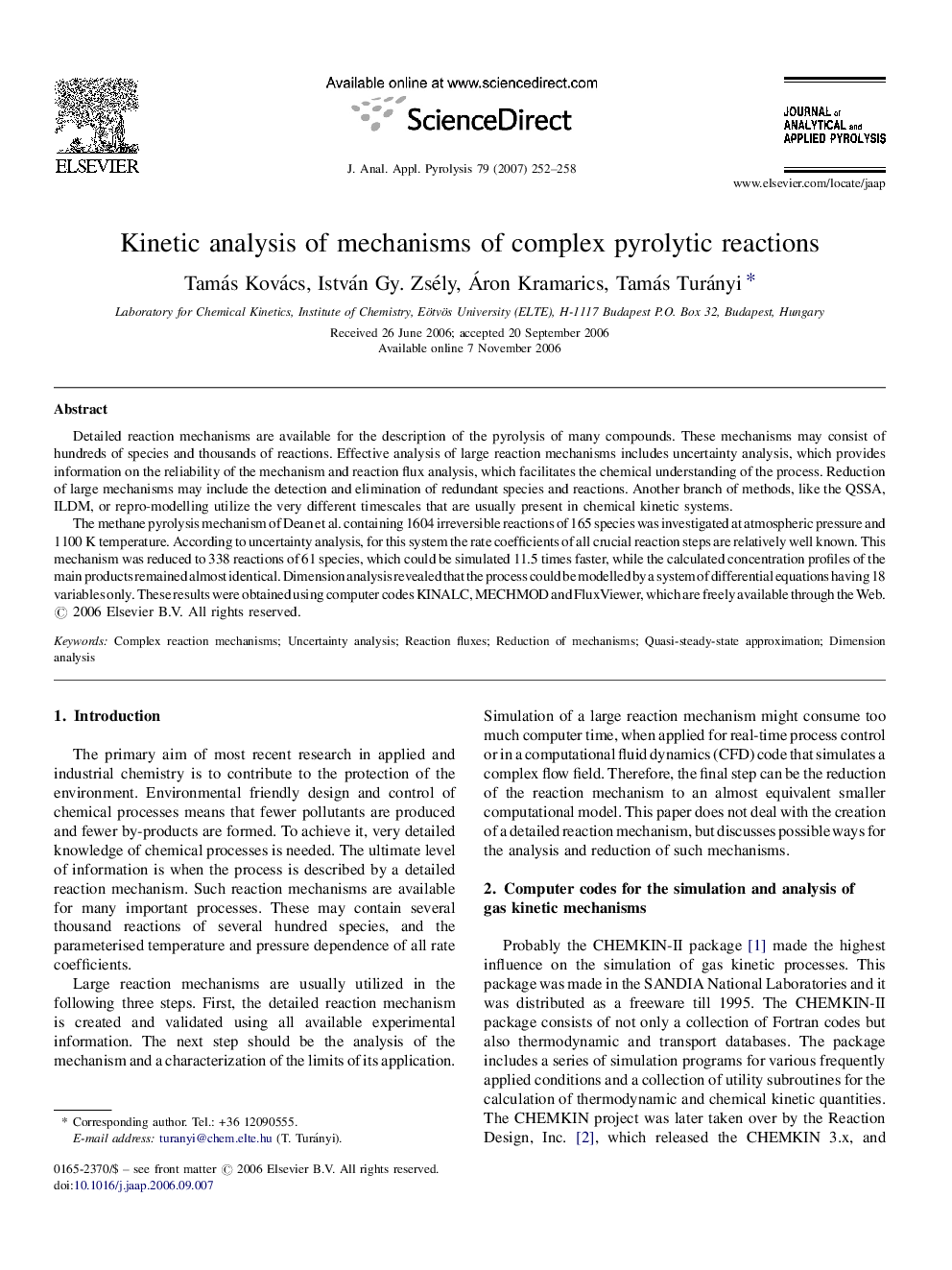| Article ID | Journal | Published Year | Pages | File Type |
|---|---|---|---|---|
| 1197956 | Journal of Analytical and Applied Pyrolysis | 2007 | 7 Pages |
Detailed reaction mechanisms are available for the description of the pyrolysis of many compounds. These mechanisms may consist of hundreds of species and thousands of reactions. Effective analysis of large reaction mechanisms includes uncertainty analysis, which provides information on the reliability of the mechanism and reaction flux analysis, which facilitates the chemical understanding of the process. Reduction of large mechanisms may include the detection and elimination of redundant species and reactions. Another branch of methods, like the QSSA, ILDM, or repro-modelling utilize the very different timescales that are usually present in chemical kinetic systems.The methane pyrolysis mechanism of Dean et al. containing 1604 irreversible reactions of 165 species was investigated at atmospheric pressure and 1100 K temperature. According to uncertainty analysis, for this system the rate coefficients of all crucial reaction steps are relatively well known. This mechanism was reduced to 338 reactions of 61 species, which could be simulated 11.5 times faster, while the calculated concentration profiles of the main products remained almost identical. Dimension analysis revealed that the process could be modelled by a system of differential equations having 18 variables only. These results were obtained using computer codes KINALC, MECHMOD and FluxViewer, which are freely available through the Web.
